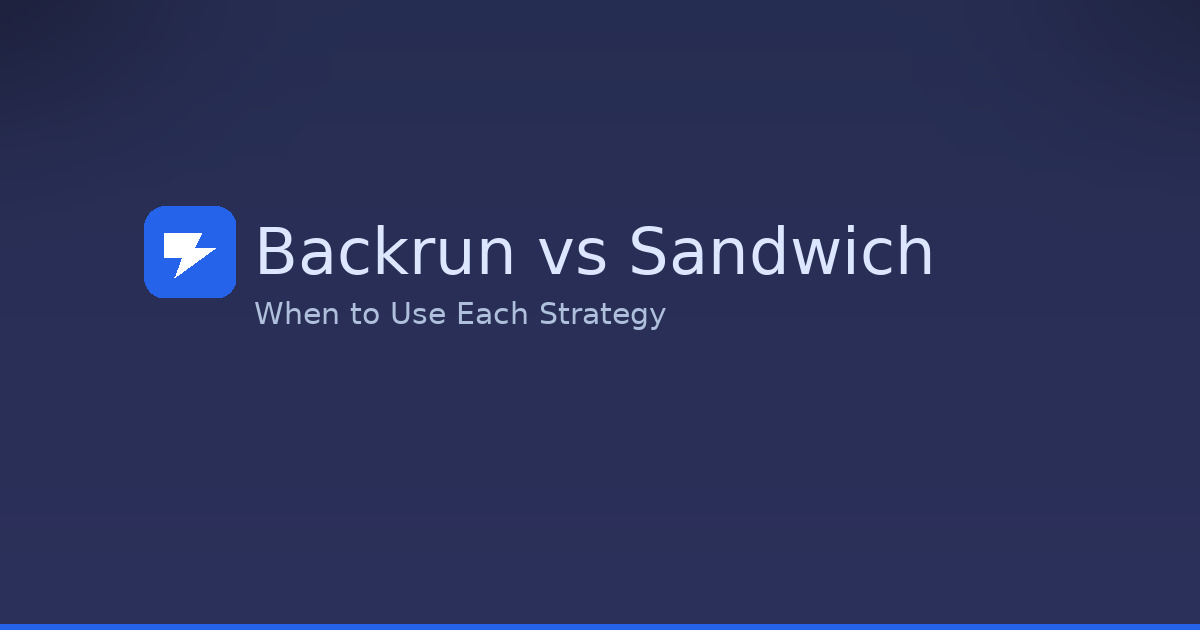Backrun vs Sandwich: When to Use Each Strategy
Backrun vs sandwich: compare strategies, when to use each, decision criteria, ethical caveats, and the essential safeguards (simulation, caps, allowlists) for safer, consistent execution.
Outcome
Ship a safer backrun route
Updated
8/8/2025
Next step
Launch dashboard & assign node

Overview
Pros/cons of backrun vs sandwich, with decision cues and safeguards.
TL;DR
- Prefer backrun on liquid, trusted pools.
- Sandwiching raises ethical/compliance concerns; disable by default.
- Always simulate and cap slippage.
Key points
- Clear definitions and when this topic matters for MEV practitioners.
- Step-by-step guidance you can apply inside FRB today.
- Risk notes and guardrails (no profitability guarantees).
Walkthrough
- Setup — ensure reliable RPC/WSS endpoints and time-sync.
- Configuration — start with simulation/canary, set slippage and budget caps.
- Execution — prefer private bundles when available; monitor inclusion and adjust.
- Review — log outcomes, tweak filters, and iterate conservatively.
Example
- Backrun: follow a large swap moving price toward your direction; reference tx hash.
- Sandwich: often blocked; avoid unless policies allow and risks addressed.
Checklist
- [ ] Liquidity depth sufficient
- [ ] Router allowlist
- [ ] Slippage <= threshold
Risk & compliance
MEV is experimental and high-risk. Slippage, inclusion uncertainty and reorgs can cause losses. You are responsible for legality in your jurisdiction.
Next steps
Use the FRB agent to scan mempools and submit private bundles with custody preserved.
→ Try FRB or watch the 2‑min demo on the homepage.
Step after reading
Launch FRB dashboard
Connect your wallet, pair the node client with a 6-character PIN, and assign the contract mentioned above.
Need the signed build?
Download & verify FRB
Grab the latest installer, compare SHA‑256 to Releases, then follow the Safe start checklist.
Check Releases & SHA‑256Related
Further reading & tools
Comments
Backrun example clarified a lot for me.
Great primer on private bundles and risks.
Adding a “pitfalls” section was a nice touch.
Could you compare relay options in more detail?
Please cover bundle failure modes and retries.
Inclusion rate improved after moving to private bundles.
This helped me fix my inclusion issues last week.
Hope to see more examples on Polygon.
Would love a follow-up on simulation best practices.
Clear and concise—thanks for the safety notes!
Benchmarks vs public PGA would be amazing.